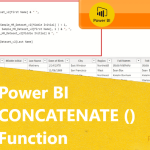SharePoint is a highly adaptable platform tailored to suit the distinct requirements of an organization’s project management procedures. It facilitates the creation of customized project templates, workflows, and forms that mirror the organization’s unique needs, significantly enhancing the efficiency of the project management process.
SharePoint’s primary purpose is collaboration; it offers a centralized platform where groups of people can work together and successfully exchange information. This collaboration is enabled by creating project sites within SharePoint where documents can be shared, tasks and deadlines can be tracked, and real-time communication can occur.
SharePoint enables seamless connection with a number of products, including Microsoft Office and Power Apps, in addition to these functionalities. These tools prove instrumental in supporting various project management activities.
Microsoft Projects can be employed for devising comprehensive project strategies and monitoring project progression, while Power Apps allows for creating custom forms and automating workflows.
How To Build A Solid Project Management Within SharePoint
Building a solid management system can be straightforward: defining your goals, choosing the right tools, implementing processes and workflows, providing training and support, and improving. But, there are some points to look around when you are planning to invest in project management software:

Step 1: Plan and Execute an Effective Project Management System
Determining your project management system’s requirements, goals, and objectives is critical in planning and implementing an effective system. This process should involve a thorough analysis of your organization’s needs, including reviewing current processes and identifying areas for improvement.
For example, a goal could be to reduce project completion time by 20% within the next six months or to improve collaboration and communication among team members by implementing a centralized project management platform.
Once you’ve determined your goals and objectives, you can use this information to determine the requirements for your project management system, including the type of tools and processes you will need and the level of customization and automation required.

Step 2: Create a SharePoint Collection and Give Users Designated Access
One key feature of SharePoint is the ability to create site collections, which are subsites within the larger SharePoint platform. Site collections organize information and resources related to a specific project or team. Within a site collection, permissions can be assigned to individual users or groups, allowing designated individuals to access, edit, and share information.
Another critical aspect of SharePoint is the customization options it offers. Site collections can be tailored to meet the specific needs of a project or team, adding custom lists, libraries, web pages, and apps.
Additionally, SharePoint integrates with other Microsoft products, such as Office 365, making it a versatile and powerful tool for project management and collaboration.

Step 3: Create lists for tasks, milestones, issues, risks, and other relevant data
Lists in SharePoint are a simple and effective way to organize and manage data. They are tables that can be created and suited to a client’s requirements, project, or team. For example, lists can be used to track tasks, milestones, issues, risks, and other relevant data for project management.
To create a list in SharePoint, users must have the necessary permissions. Once the list is created, columns can be added and customized to fit the specific needs of the project or team.
By using lists in SharePoint for project management, teams can ensure that all relevant information is organized and accessible. Also, lists can be updated in real-time, allowing all team members access to the most current information.

Step 4: Create Dashboards and Reports To Give Real-Time Project Insight
To provide real-time project insight, SharePoint offers various reporting and visualization tools. These tools enable teams to see project data and provide insights into the status of projects, tasks, and resources.
One of the reporting tools available in SharePoint is SharePoint Lists. This tool allows users to create lists for storing project data, such as tasks, risks, and issues. The lists can then be visualized by creating views and charts, providing an overview of the project data at a glance.
Another powerful reporting tool that can be used in SharePoint Project Management is Power BI. This tool lets users connect to SharePoint data and create interactive dashboards and reports.

Step 5: Train users on the system and how to use the services
Training users on SharePoint Project Management ensures the system’s practical use. Users must understand how to use SharePoint’s various features and tools to manage projects, tasks, and resources.
We need to ensure that users understand the system, as this will ensure they can use it. Also, regular training sessions and refresher courses can keep users updated with new features and best practices.
Also, to formal training sessions, providing access to resources such as user guides, video tutorials, and online forums can help users use the SharePoint Project Management system. Encouraging users to share their experiences and knowledge with others can also foster a culture of collaboration and continuous learning.
10 Tips For Improving SharePoint Project Management
It helps better communication between teams working on different projects by providing them access to all relevant information related to their work. Here are some tips to improve your Project Management through SharePoint:
1. Define clear project objectives and KPIs
Project objectives and key performance indicators (KPIs) are essential for successful SharePoint projects. The project manager must define clear project objectives to determine how much effort will be needed from each stakeholder. KPIs help measure progress against the project’s target throughout the project’s lifecycle.
Project goals, objectives, and key performance indicators are critical to the success of any project. In SharePoint Project Management, these three elements are often called POGs (Project Objectives and Key Performance Indicators).

2. Use SharePoint templates and workflows for consistency and efficiency
Using SharePoint templates and workflows can benefit the team’s consistency and efficiency in project management. Templates provide a standardized format for project-related documents, such as project plans, meeting agendas, and status reports.
This can save teams time, allowing them to focus on more valuable activities. Workflows also provide a clear, visual representation of project processes, making it easier for team members to understand their roles and responsibilities and to collaborate.
3. Implement a site for each project to keep all relevant information in one place
A dedicated site for each project can improve team organization and communication. By keeping all relevant information in one place, teams can save time and reduce the risk of miscommunication and confusion.
A project site in SharePoint can include various tools and resources, such as calendars, task lists, document libraries, and discussion boards. This allows teams to share project-related information, collaborate on tasks, and track progress.
4. Use task management features to assign tasks and track progress
Effective task management is critical to any project’s success. SharePoint Project Management provides a range of features to help teams assign tasks, track progress, and ensure that projects are finished on schedule and at a high quality.
One of the critical task management features in SharePoint Project Management is the ability to assign tasks to individual team members and set deadlines. This makes it simple to guarantee that everyone understands what to do and when.
5. Create a document management system to store and organize project documents
A document management system (DMS) is a software application that centralizes control over the creation, storage, management, and dissemination of electronic documents. It helps organizations manage project-related documents in an organized manner.
The key features of an effective DMS include document version control, access control, search functionality, document workflow management, and secure document storage. For example, document version control ensures that only the most current version of a document is accessible.
6. Make use of the project timeline feature to visualize project schedules and deadlines
Project timelines are an essential way to visualize project schedules and deadlines. Use a project timeline to show the project schedule, along with milestones and the dates of each milestone.
Project timelines can be created in either Gantt charts or bar charts. A bar chart is like a Gantt chart but uses vertical bars instead of horizontal bars to represent time.
7. Integrate SharePoint with other Microsoft tools, such as Teams and OneDrive, for improved collaboration
SharePoint has always been an excellent tool for collaboration, but it’s easier to maintain those relationships with your team if they’re spread across different platforms.
Integrating SharePoint with other Microsoft tools, such as Teams and OneDrive, for improved collaboration is essential in keeping your team connected and productive. For example, you can use SharePoint to create a shared document library where team members can collaborate on documents available to all team members.
8. Establish clear roles and responsibilities among team members
Clear roles and responsibilities are essential for teamwork. As a leader, you must be clear about who handles what so the team can be effective.
If a task still needs to be done, ask yourself whether the person who’s supposed to do it knows who is supposed to do it and why. If not, ask them to make sure they talk with their teammates.
9. Review and update project plans to ensure projects stay on track
Project management is not a one-time job. Project plans are meant to be updated, reviewed, and clarified as the project progresses. While many projects are completed on time and within budget, others must go according to plan.
- The first step in correcting any problems with a project plan is to review the plan to ensure it is accurate.
- The second step is to create an updated plan that includes any changes since the original plan was created.
10. Provide training and support for team members to ensure they use SharePoint for project management
Ensuring the effective use of SharePoint for project management is providing comprehensive training to all team members.
This training should cover all the features and functions of SharePoint that are relevant to project management, including how to create and manage projects, tasks, calendars, and document libraries.
Regular surveys, focus groups, or open forums can be used to gather this feedback and ensure that the training and support provided meet the team’s needs.
Why should you choose EPC Group for SharePoint Project Management Consulting?
Most organizations need a project management method for SharePoint. This makes it necessary to develop a PMO to help the organization establish an effective practice for managing projects.
We understand that every organization has unique business goals and objectives, so we tailor our approach to meet those needs. Our team of SharePoint professionals is composed of experts in SharePoint technology as well as SharePoint project management. We have worked with hundreds of companies over the years on their SharePoint initiatives, and we are ready to help you with yours!
Our consultants have years of experience working with SharePoint professionals across many industries. Our consultants are industry experts who bring much experience in managing projects while minimizing risk and cost. Being able to provide our clients unbiased advice about their current or future projects, so they can make informed decisions about which direction they should take.










